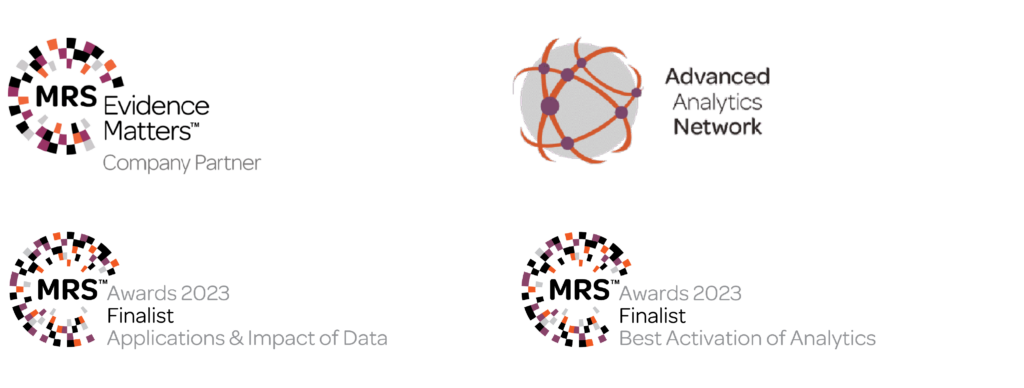“We’ve been working in segmentation for over 20 years, and we’re often asked how has it changed in that time. The simple answer to that question is that more brands have databases and so more brands need to implement segmentation on those databases.” Leigh Morris
It seems natural than every company should have a database in 2022 and yet it is easy to forget that for alcohol brands and others, this is relatively new. Brands now have a large amount of customer data held internally and tagging these customers with segments opens up huge commercial opportunities. We have developed an approach, called Hybrid Segmentation, that fuses survey and customer data to create a single, linked view of the consumer. This creates a segmentation that is rich in motivations & needs, but can also be tagged to individual customers.
Even where your CRM might not be a key use case for it might not be the right time to tag to customers, for logistical, legal, or cultural reasons, attributing segments to your database is something that every brand should consider. There’s a lot that can be learned from customer data and how it is stored. Your surveys should harmonised alongside existing business processes – from simple things like matching product lists, customer touchpoints, or even how demographics are used.
Three use cases for Hybrid Segmentation
- By tagging segments to an alcohol company’s database and they saw 14% increase in click-through and conversion from marketing emails targeted to specific segments.
- Our Hybrid Segmentation for an international travel company allowed them to tailor the resort experience for individual travellers, decide who to send brochures to, and optimise online experience based on their segment. None of this would have been possible without a link to the Database.
- A major UK insurer wanted to align their brand portfolio against distinct consumer personas. Hybrid Segmentation was part of a wider marketing effort that resulted in the client winning an IPA Effectiveness Gold Award, for returning a key brand to growth.

Here’s a few ways in which you could tag your database:
Ideal Customer Profile (ICP): Can help you to identify key attributes that your most profitable segments share.
Source Channel, Content or Campaign: Can help you establish which themes and messages are more successful and which need more attention.
Needs, Interests and Hobbies: Understand the wider context of customers’ lives and find new opportunities for placement.
Buying Personas: Representations of groups of customers that can help you to easily understand the needs and motivations of your consumers.

Beyond your CRM
There are a lot of other places where the implementation of your segment can have an immediate and positive impact:
Internal Comms
One of the key objectives with any segmentation campaign is knowing your customer better, sharing this information internally on an ongoing basis is a key part of any programme. While internal stakeholders should have been involved early on to help you to identify the different places where your data can be used, their teams might be able to identify some more of the nitty gritty. While many organisations may have a central database, you might be unaware of individual team members who have vital information sitting in separate spreadsheets.
Email lists
It’s not uncommon for marketing tools such as mass emailers to sit outside of the abilities of a CRM and so this is another dataset in which segmentation can easily impact. In fact a survey from Mailchimp found that Email campaigns that used segmentation had a 14.31% higher open rate vs non-segmented campaigns.
Advertising
While the targeting available on many advertising platforms will be more basic that the consumer profiles you will have built up, you should still see which elements are transferable. While some demographic data will easily transfer, its worth looking at the hobbies and interests established in your research to see which websites could be targeted. For example if you discover that your audience are early adopters of technology, then its likely they will read tech related reviews and preview websites.
Research
Adding your segmentation into your future research will instantly add more value and allow for greater manipulation of data. While segmentation should provide a bedrock of information for years to come, it is not a data source that should be left to rot. It will be need to be added to and updated as new information comes to life.
Linking your segmentation to your existing data infrastructure is key in getting the most value out of it. If you want to speak to the people who actually know how to get the most out of your first-party data, contact Bonamy Finch today


